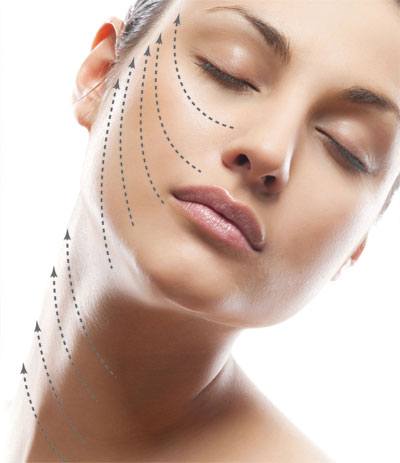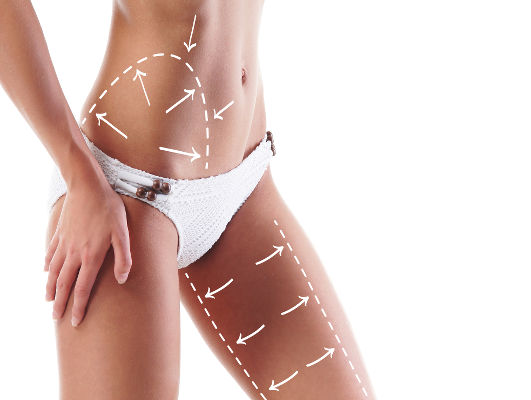CONTRAINDICATIONS
Some medical contraindications:
– pregnancy and breastfeeding
– the skin’s sagging after surgery
– administration of anticoagulant drugs
– skin infections in the area to be treated
– autoimmune diseases
– thread allergies
– the area previously injected with a nonabsorbable base product, to prevent the appearance of granulomas
– and there are contraindications referring to the procedure itself. You must be able to refuse incompatible candidates, such as patients who have unrealistic expectations regarding this technique and the effectiveness of the surgical lifting operation.
– if the skin is very thin, the threads can be visible or tangible
– very thick and heavy skin, the results not being enough
– too wrinkled, the threads being ineffective
– excess of skin and fat.
All of these cases fall into the category of surgery. There are patients who want to do the surgery no matter what the doctor says, so the doctor has to inform them that the results will not be complete.
CONSULTATION BEFORE INTERVENTION
The initial consultation is mandatory in order to verify the feasibility of the procedure.
At this first consultation, the physician performing the procedure informs the patient about the aesthetic nature of the procedure, ensures that they are not contraindicated and that the patient is the ideal candidate for treatment.
Once these conditions are met, the patient is given a clear consent form and the necessary procedural information documents to read and sign.
The number of threads and the nature of the implanted materials will be determined by the surgeon according to the need of each individual patient.
THE PROCEDURE
The procedure is outpatient, with strict hygiene and aseptic rules. No preparation is required before treatment, but it is recommended not to take aspirin or anti-inflammatory drugs the day before the procedure. For the patient’s comfort, an anesthetic cream can be applied to the treatment area 30 minutes prior to the procedure, or a local anesthetic can be injected at the point where the thread comes in and out.
Using a thin needle or a small cannula, the doctor inserts the threads under the skin one by one, following the areas marked with the eyeliner before the procedure begins. The threads are anchored in the dermis by exerting a slight lift up manually. The procedure lasts 30-60 minutes depending on the type and number of implanted threads and other indications. Several areas can be treated at the same time.
After the procedure, patients are instructed to follow a number of recommendations provided by the surgeon to avoid compromising the result: resting, as few grimaces as possible, avoiding any physical activity, avoiding the sauna or steam room and avoiding any facial massage.
This new therapeutic option offers many benefits, including a painless procedure, and treatment can be repeated as often as we want, because the materials are completely resorbable and can be supplemented by other rejuvenation procedures, such as fillers or botulinum toxin.
REACTIONS
Any medical procedure, even small, involves a certain number of risks. Reactions are generally quite minor, however some local reactions are possible: mild edema, erythema, skin pressing sensation in the treated area, small folds in front of the ear and a slight post-procedure asymmetry.
RESULTS
They take place in two distinct phases. The first is immediately seen as a skin lifting, with a slight loosening within the next week following the procedure. The second, which leads to the synthesis of collagen around the threads, is more progressive. The threads will be completely absorbed in a few weeks (6-12 months), but the aesthetic effect is much more durable due to fibrosis around the threads (12-18 months). Therefore, this treatment is temporary and must be renewed to maintain the results, according to the patient’s wishes.
The therapeutic success is largely dependent on the technique and the treatment protocol in each case. Many factors can influence results such as age, lifestyle (smoking, sun exposure) and skin quality.
The author reviewed the result of the implant with 100% bioresorbable tensor threads after two years of observation. The author often combines the implantation of PDO threads with LPA during the same procedure for a better result and lower cost. The results were satisfactory in the treatment of the neck, neckline, lips and eyebrows, but also parts of the body (buttocks, thighs, arms). This is obviously very encouraging and leads the author to continue on this path.
DISCUSSIONS
Compared to surgical facial lifting that requires general anesthesia and in addition the risks and convalescence, the minimally invasive method, has gained popularity with many benefits. The best example is the implant with tensor threads. It was around the 90s’, when surgeons Marlene and George Sulamanidze developed the famous Russian threads or ‘aptos’ threads which were non-absorbable polypropylene threads. These permanent threads have been used for a few years, especially because of the durability of the results.
In 2010, Dr. Foumeneteze presented at the EMAA (European Masters in Aesthetics and Anti-Aging) Convention in Paris, a retrospective from 110 patients who have been monitored for 2 years. This study showed the efficacy of permanent suspending threads and their safety. The authors reported several complications after their application, such as foreign body reaction. These complications are very rare if the doctor has a greater experience. The permanent threads have evolved into modern threads made of silicone and polyester with round notches available now.
However, the correction of moderate ptosis with no excess skin with resorbable threads has seen an impressive rebirth in aesthetic medicine due to increased safety. Their recent appearance on the market has generated a great interest among physicians and also critics from others. Indeed, today we have two opposing positions: on the one hand, the followers of resorbable threads, on the other hand, non-absorbable threads. In this contest it seems of the utmost importance to clarify as far as possible the arguments that guided the author’s choices.
The author’s preferences lean towards resorbable threads for the following reasons:
– an important quality is the biomaterial and the ability to completely and gradually degrade the threads without remaining in the body; this effect limits the risk of causing local reaction.
– on the other hand degrading biomaterials can not provide aesthetic results over a long period of time. In order to perpetuate the results, the patient must repeat the procedure.
The short duration of the effect is offset by the benefit in terms of patient safety. The increase in popularity of these threads is the source of the enthusiasm of many doctors, but they have created a skeptical reaction for some, in terms of biological action. However, recent studies have provided clear objectives in favor of LPA threads producing type I collagen.
Suspension threads can be a source of discomfort or dissatisfaction. In these cases, resorbable threads will eventually disappear. Removal of permanent threads can only be done by an experienced plastic surgeon.
To conclude this discussion, the author believes that choosing between a resorbable and a non-resorbable thread will depend only on the practitioner’s technique, experience, familiarity with the subject and previous results. To the extent that the author is interested, they do not make implants with non-resorbable threads for aesthetic purposes, even if the side effects remain very rare in the treated patients.
For all of the above reasons, it seems reasonable to use biodegradable materials that, despite their relatively short duration, provide patient satisfaction and safety. The implantation of tensor resorbable threads is a relatively new technique amongst aestheticians, and for the most part, still in evolution and development. Only a limited number of practitioners have published the clinical results, and showed their experience.
CONCLUSIONS
In recent years, we have seen the emergence of minimally invasive medical alternatives in the field of aesthetic surgery. Their principle is based on the implantation of intradermal non-absorbable tensors designed to correct the moderate laying of the face, neck, and body skin. If permanent thread placement is a well-known procedure, considering the large number of studies and procedures, the growth of a new generation of resorbable threads begins to be of interest to more physicians and patients due to benefits. Indeed, the implantation of these threads into the dermis requires no incision just a simple local anesthesia allowing for their repositioning and shaping the outline of the face. Implanted threads will resorb spontaneously after they have done their job.
This is why the author has decided in favor of this technique for patient safety. Extending the results is possible by renewing the procedure at the patient’s request. This technological breakthrough has proven to be a way to allow local collagen synthesis.
Regarding the implantation of threads depends on the doctor’s’ experience. The plastic surgeon must be well trained in the procedure, have good knowledge of the anatomy of the treated area and its surroundings and, most importantly, an adequate selection of patients, these factors having a significant influence on the end result. Even though the efficacy of tensor resorbable threads remains a topic of heated debate, these two techniques – implantation with permanent or resorbable threads should not be regarded as a competition, but as another alternative based on the therapist’s opinion and patient safety. From the author’s point of view as an aesthetic surgeon, tensor threads are not meant to replace the surgical procedure, even if they are more radical and invasive, they remain irreplaceable when the passage of time is simply too severe on the tissues.
Today, the implantation of tensor resorbable threads is the only temporary and reversible procedure that offers a “lifting” effect naturally, provided that the procedure is done by a plastic surgeon who has learned the art and after a rigorous selection of candidates.




